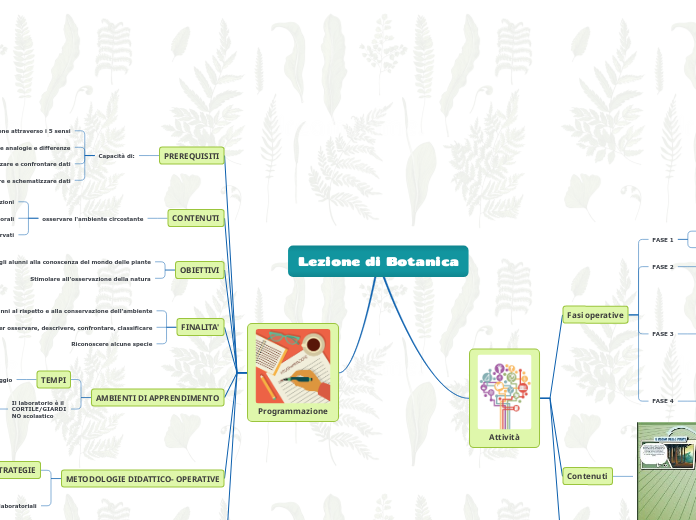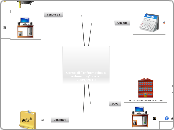Passare dall'esplorazione senso percettiva alla rappresentazione grafica
Lezione di Botanica
Learn more about hurricanes and tornadoes, the areas of the world they affect, how they are formed and when, and what you can do to survive such an extreme storm.
Programmazione
VERIFICA
Hurricanes that have been known throughout history
Riconoscere le foglie studiate attraverso gli erbari creati
VALUTAZIONE
partecipazione al lavoro di gruppo
What were the damages caused by it?
Type in the answer.
metodo di lavoro
Where did it hit?
Type in the name of the area that was affected.
competenze raggiunte
evoluzione del processo di apprendimento
When did it take place?
Type in the answer.
METODOLOGIE DIDATTICO- OPERATIVE
How do hurricanes form?
Watch the video then type in a short explanation of how the hurricanes are formed.
metodologie induttive laboratoriali
STRATEGIE
learning by doing
cooperative learning
brainstorming
AMBIENTI DI APPRENDIMENTO
The classification system for hurricanes is called The Saffir-Simpson Hurricane Wind Scale, and it's a 1 to 5 categorization of the hurricane's intensity at the indicated time.
Each category expresses the intensity in miles per hour. Example: category 1 (74-95 mph).
Type in the other 4 categories.
Il laboratorio è il CORTILE/GIARDINO scolastico
Gli alberi serviranno da strumenti
le foglie serviranno per costruire un erbario a libro
TEMPI
Aprile- Maggio
1h a settimana
FINALITA'
Riconoscere alcune specie
Saper osservare, descrivere, confrontare, classificare
Sensibilizzare gli alunni al rispetto e alla conservazione dell'ambiente
OBIETTIVI
Stimolare all'osservazione della natura
Avvicinare gli alunni alla conoscenza del mondo delle piante
Type in the two official seasons from the Atlantic and Pacific.
CONTENUTI
Which are the areas/countries of the world hit most frequently or severely by hurricanes? Choose from the options below or add your own.
ChinaPhilippinesGrand CaymanJapanAustraliaUnited StatesCaribbeanMexicoTaiwanVietnamAtlantic CoastOther
osservare l'ambiente circostante
formulare ipotesi relative ai fenomeni osservati
stabilire relazioni temporali
operare classificazioni
PREREQUISITI
Hurricanes are the most violent, swirling storms on Earth, with winds that can go up to 259 kilometers per hour.
A hurricane's forming elements:
- Eye- the "hole" at the center of the storm where the winds are lighter and the skies are only partly cloudy
- Eye wall- the ring of thunderstorms that are swirling around the eye. This is where the winds are the strongest and rain the heaviest.
- Rain bands -that expand from the eye wall
Capacità di:
classificare e schematizzare dati
registrare, ordinare, utilizzare e confrontare dati
osservare analogie e differenze
percezione attraverso i 5 sensi
Attività
Verifica finale
The classification system for tornadoes is called The Fujita Scale (or F scale), and it's an F0 to F6 categorization of the tornado's intensity.
Each category expresses the intensity in miles per hour.
Example: category F0 (40–72 mph; includes damages to trees, chimneys, and billboards).
Type in the other 5 categories.
VERIFICA WORDWALL
VERIFICA KAHOOT!
Contenuti
Il regno vegetale
Tipi di foglie
Fasi operative
Tornadoes are local storms of short duration (this ranges between 5 and 10 minutes) formed of winds that rotate at very high speeds, usually in a counter-clockwise direction.
A tornado's characteristics:
- Time of day: they usually occur in the afternoon (3 - 7 PM)
- Direction: usually from southwest to northeast
- Length of path: this is the distance it travels; the average is 4 miles, but it could also travel around 300 miles.
- Width of path: averages between 300 and 400 yards but tornadoes have cut paths a mile or more in width.
- Speed of travel: though speeds of 68 mph have been reported, the average speed is somewhere between 25 and 40 mph.
- Cloud: dark cumulonimbus (thunderstorm cloud) from which the funnel-shaped pendant extends to the ground.
- Precipitation: rain and hail before the tornado hits and heavy downpour to the side of the tornado's path.
- Sound: roaring, rushing noise.
FASE 4
PRESENTAZIONE ERBARIO
FASE 3
COSTRUIRE UN ERBARIO A LIBRO
Istruzioni per costruire un Erbario
FASE 2
OGNI GRUPPO RACCOLGA LE FOGLIE INDIVIDUANDO LE DIVERSE TIPOLOGIE
FASE 1
DIVISIONE IN GRUPPI
COSA SONO LE PIANTE?









